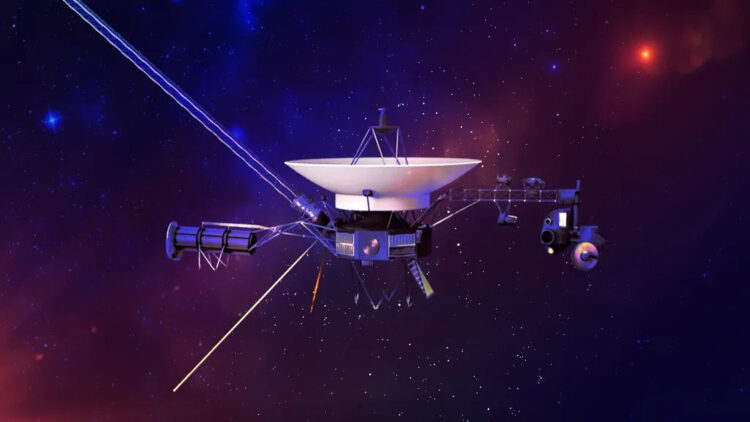NASA has successfully solved the mystery of its Voyager 1 spacecraft, which had been transmitting nonsensical signals for five months. Launched nearly 50 years ago and now over 15 billion miles away, the iconic probe had been unable to relay usable data since November 2023 due to a malfunctioning computer chip. Thanks to the innovative problem-solving efforts of NASA engineers, Voyager 1 is now back online and sending readable messages from the depths of interstellar space.
What led to Voyager 1 being reduced to complete gibberish?
The journey to resolve Voyager 1’s communication issues began when the spacecraft ceased transmitting coherent science and engineering data on November 14, 2023. Although the probe continued to receive commands from Earth, the signals it transmitted back were unintelligible.
The engineering team at NASA’s Jet Propulsion Laboratory (JPL) in Southern California pinpointed the problem: a malfunctioning chip located within the flight data subsystem (FDS), which is crucial for packaging the data that Voyager collects for transmission.
With a space probe as old as Voyager 1—which was launched back in 1977—replacing any hardware is not feasible. This is especially considering its extreme distance from Earth. As the team continued their investigations, they found that the faulty chip was responsible for storing essential software code that rendered the data unusable.
To overcome this obstacle, NASA implemented a clever solution: they divided the critical code into smaller segments and distributed it across various sections of the FDS. This method enabled the team to bypass the faulty chip and keep the system operational.
“Hi, it’s me”: Voyager 1 returns to life after months of garbled communication
Recently, NASA beamed the new code segments to Voyager 1. Due to the probe’s distance, signals take approximately 22.5 hours to travel one way, meaning it would take a full day before the engineering team at JPL could confirm whether the fix had worked.
Once that time elapsed, the team was overjoyed and relieved to receive a readable signal from Voyager 1, marking the first time in five months that they could access the health and status of the spacecraft.
“Hi, it’s me,” the official X account for Voyager 1 posted shortly afterwards, suggesting that these words were part of the signal the team had received and deciphered from the now-intelligible space probe.
With this successful transmission, NASA can begin the process of restoring Voyager 1’s capability to send scientific data again. The team plans to relocate and adjust other affected components of the FDS software in the near future, which will allow the probe to continue its mission of exploring the mysteries of interstellar space.
What does the future hold for Voyager 1 now?
Voyager 1 and its twin, Voyager 2, are the only spacecraft to have ventured into interstellar space, crossing the boundaries of our solar system. Launched to explore the outer planets, these probes have made groundbreaking discoveries over nearly five decades.
Remarkably, they continue to function, exemplifying the durability and brilliance of human engineering.
As the mission continues, NASA scientists are analyzing recent data alongside previous records to identify any discrepancies related to early communication issues. These efforts highlight the challenges of operating spacecraft far away from Earth while also underscoring the extraordinary successes of these missions.
With improved connectivity, the JPL team is hopeful that Voyager 1 will boost our understanding of the universe, providing valuable scientific insights. Thanks to their engineering prowess, the space probe remains a symbol of hope, human curiosity, and exploration. It is poised to uncover more secrets of the cosmos, and we can’t wait to see what it discovers next!

